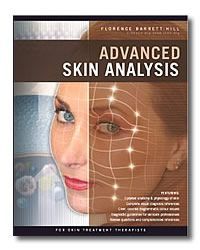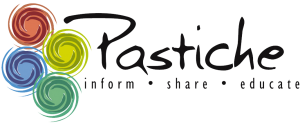the pastiche method of skin analysis
Using the Pastiche Method®, clinical aestheticians and skin treatment practitioners can identify and accurately determine the basic majority skin type and the prevalent anomalous skin conditions seen in their clients.
The Pastiche philosophy is centred upon determining the causes of skin conditions as opposed to the more simplistic approach of treating symptoms.
OBJECTIVES:
Learn how to identify of existing triggers, predispositions, and contributing factors to determine anomalous cellular behaviour, and why skin conditions have occurred. This can be accomplished by understanding the cascade effect and that a majority of conditions are multi-faceted. An investigation of the affected skin functions will guide the prescription of the most appropriate and effective treatment solutions.
The principles of the Pastiche Method demonstrate:
- The value of linking skin structure and function to skin conditions
- The importance of determining primary and secondary causes of prevailing skin conditions
- How the ‘cascade’ effect manifests itself as a number of related skin conditions
- The importance of determining various triggers and contributing factors of the conditions
- Why the prioritisation of condition treatment order provides maximum remedial results
METHODOLOGY
The Pastiche method combines
- A rigorous consultation procedure – Featuring over 60 questions that build a profile of intrinsic and extrinsic factors, pre-dispositions, triggers and contributing factors that affect skin health and conditions.
- A detailed surface examination – A physical examination of the texture of the skin is conducted with either a magnifying glass or a high-resolution microscopic camera. Utilising parallel and cross-polarised imaging as well as a black light (UVA 360nm) skin scanner to identify the quality of sebaceous secretions and pigmentation damage not visible under normal lighting conditions.
- Measuring several parameters within the skin. – A series of measurements are conducted to determine risk factors and establish a baseline for treatment strategies. High accuracy, repeatable measurements using a Corneometer, (to measure hydration levels) a Sebumeter, (to measure lipid levels) and a Mexameter (to measure melanin density and vascularity) are employed.
The above information can be distilled via a logic pathway that provides indicators of the primary and secondary causes of the skin conditions. These are commonly a combination of extrinsic factors reacting with intrinsic factors and pre-dispositions.
There are three primary diagnostic skin conditions, however, many conditions straddle more than one category, and this is where individuals with limited knowledge and experience can often draw incorrect conclusions. This is where the Pastiche Method® truly excels; our graduates are equipped with an unparalleled level of expertise and highly accurate diagnostic abilities based on a thorough understanding of the biological, physiological, and morphological aspects of the skin.
COURSE PREREQUISITES/PRIOR LEARNING RECOMMENDATIONS
For Beauty Therapists/Aestheticians
A minimum of 800 hours basic training combined with at least 50 hours of postgraduate education and 5 years of clinical experience. Recommended: CIDESCO, ITEC or equivalent certification, with at least 50 hours post-graduate education and 2 years clinical experience.
Please note these are generalised guidelines, and many individuals with less experience have successfully completed this course by supplementing their knowledge with other post-graduate education. If you are unsure about your situation, please do get in touch and let’s discuss your experience and training.
Medical professionals/Nurses
Supplementary Dermatology for health professionals or equivalent.
ORIGIN OF THE PASTICHE METHOD®

Florence Barrett-Hill
This specific method was developed by New Zealand born dermal scientist and skin treatment practitioner Florence Barrett-Hill in 1993 as a thesis on the importance and responsibility of determining the causes of skin conditions encountered in aesthetic practices. The technique was first presented as a postgraduate educational seminar in 1994. Over subsequent years with collaboration with other skin treatment practitioners and access to case histories across the globe, the method was refined to a point where it could be presented a dissertation.
The material was subsequently distilled to produce the textbook titled Advanced Skin Analysis (ISBN 978-0-476-00665-2) written by Ms Barrett-Hill and published in 2004. The book was an instant success, with integrations to the curriculums of many beauty therapy/aesthetic colleges. The book has had numerous translations, including Japanese, French, German, Spanish and more recently, Russian.
The books are the foundation of many successful professional skin treatment therapy (particularly Corneotherapy) practices worldwide.
The name Pastiche Method was coined from the analogy of “hodge-podge” or “made up of many parts” in this case referring to the information gathered about seemingly unrelated information about the patients history, lifestyle and current practices. The name Pastiche was also used by Florence Barrett-Hill during the 1980’s for her aesthetic camouflage practice for scarred burns survivors.
The Pastiche method of advanced Skin analysis is currently employed by individuals working in the areas of cosmetic dermatology and skin treatment therapy by clinical aestheticians and medical professionals worldwide. Seminars teaching the method have been conducted globally since 2001, with in excess of 4200 individuals trained up to September 2015. Testimonials from some Pastiche Method® disciples are here.
In an effort to reach more skin care professionals to share the knowledge, the content has been formatted for e-leaning, and has been available from the Pastiche Distance learning website since 2014. The online course, titled Advanced Skin Analysis consists of 56 units of learning across five modules, with in excess of 16 hours of video presentation interspersed with course notes and assessments.



